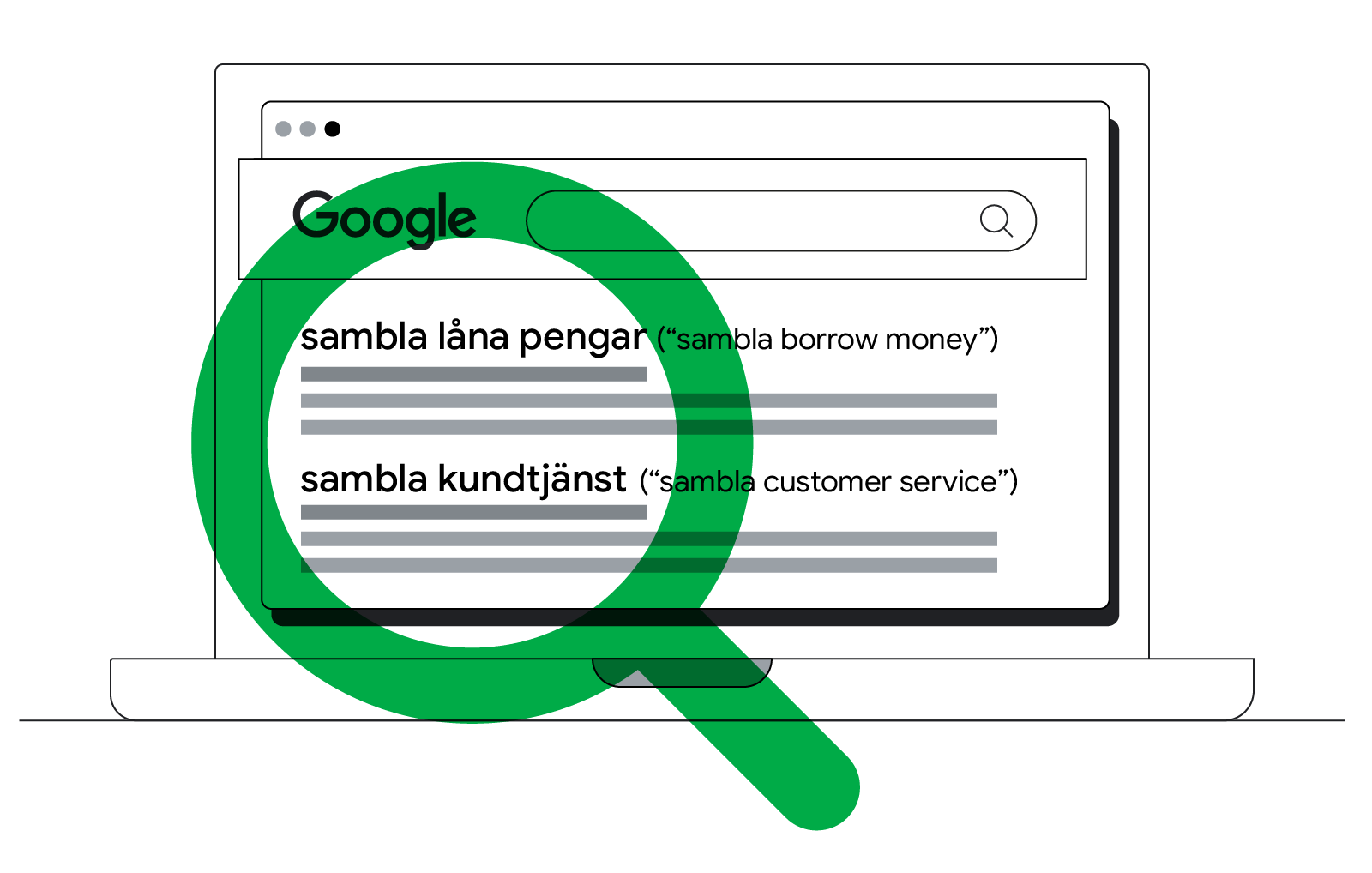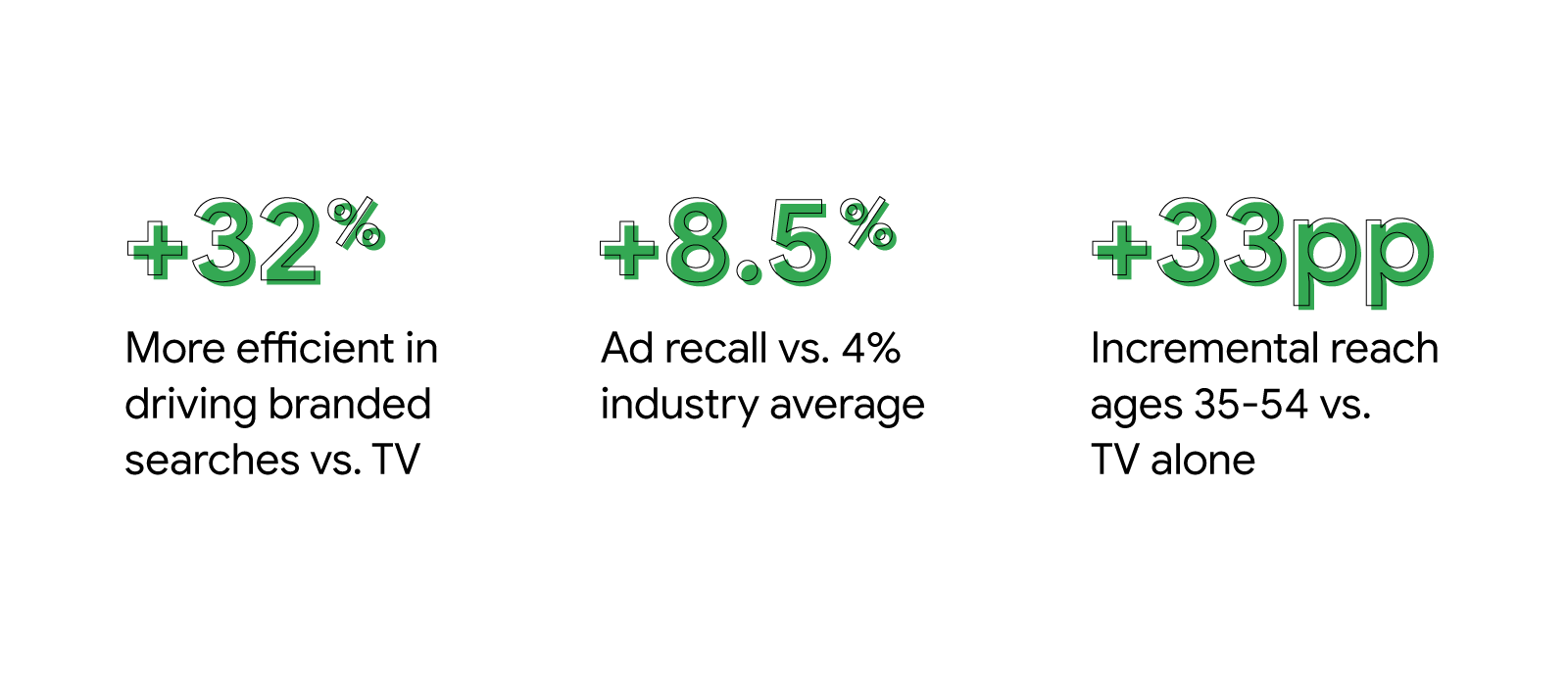Sofia Ekholm is an expert in brand building, measurement, and reputation. At Swedish loan comparison service Sambla she’s responsible for growing brand awareness in a profitable way.
Sambla helps customers in Sweden compare and consolidate loans. But with increasing interest rates and more risk-averse lenders — leading to fewer approved loans — last year was very challenging for our industry.
Having been around since 2014, we’re no strangers to the ups and downs of the market. We know that it’s vital to understand how every penny you spend is invested, especially when times are tough.
But we also know there are new processes to do things, new tools and techniques to try. That’s why we decided we needed a new way to quickly understand whether our brand marketing was driving growth in a profitable and measurable way.
Here’s our journey to learning to prioritise impactful, focused campaigns, combining TV and YouTube, and using "share of search" more strategically.
Measuring share of search…
As a marketer I’m always keen to learn new things, challenge our media mix, and embrace new ways of helping customers find the loans that are right for them. For instance, we noticed that share of search on branded queries became a hot topic of conversation, and it sparked my interest.
In a nutshell, share of search refers to the volume of search queries for a brand, in proportion to all search queries for all the brands in a category. It’s a great indicator of how top of mind we are for our category, as greater salience will equal those more searches.
At Sambla, we’ve found that branded search queries — eg “sambla låna pengar” (“sambla borrow money”), “sambla kundtjänst”(“sambla customer service”) — have a very strong correlation to paid out loans. So we decided to use these as a new KPI to understand the impact on paid out loans coming from our brand marketing activities.

We specifically wanted to measure that on our TV and YouTube advertising.
… on our YouTube advertising
We knew that TV, which had been the foundation of our branding, still drove impact, but in order to increase our reach we needed to widen our media mix. YouTube has the highest reach, which is why it was a natural choice for our media mix development.
While we were already using YouTube as a marketing channel, we couldn’t measure its impact as easily. We were running a lot of little activities with smaller investments, spread over multiple brands. But we weren’t necessarily able to see the same direct impact as we did for TV.
The biggest change we made was to pivot from lots of little activations in many different countries, to one cohesive and planned activation in one market. Although we saw good efficiency on the smaller activations, we didn’t see great results. The game changer was to get sufficient frequency levels to really cut through.
Add in frequency…
Frequency as a metric is important, because it helps us understand how often potential customers see our ads. It also helps determine the optimal number of times to show an ad to a user — not being too frequent but still showing it often enough. Imagine that catchy song stuck in your head (but less annoying!).
We realised our YouTube frequency was on "low hum", while TV was cranked to "full blast". YouTube started at “2”, with potential customers seeing our ads twice, compared to “8” on TV, with potential customers seeing our ads 8 times.
That’s why we rebuilt our YouTube strategy to include multiple formats. That way we’d be able to reach people watching on their mobile devices, or on connected TVs — and, most importantly, optimise for the right frequency and increase our share of search. Think of it like finding the perfect volume for a brand message.
And everything we set up worked perfectly together. This new approach worked at driving what matters to us: paid out loans and searches for our brand.
… and you have a 32% efficiency boost
We saw YouTube was able to deliver results similar to TV on incremental branded searches, but at a 32% higher cost efficiency. In addition, the campaign had 2X uplift in ad recall compared to the industry average.

This journey yielded valuable lessons. Firstly, we learned to prioritise impactful, focused campaigns over smaller, scattered efforts. Secondly, TV and YouTube, when combined strategically, can be a growth powerhouse. Finally, "share of search" empowers us to measure branding impact in the now, rather than months later.
So, where will our marketing compass lead us next? Only time — and some more experimentation — will tell.






